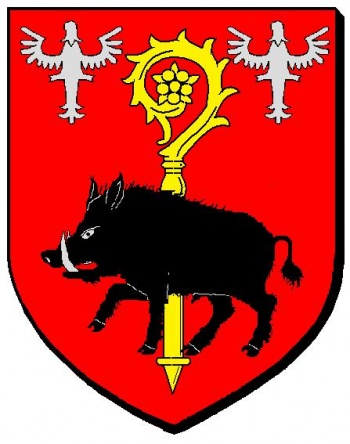Farébersviller: Difference between revisions
Jump to navigation
Jump to search
Knorrepoes (talk | contribs) m (Text replacement - "Literature" to "Literature") |
Knorrepoes (talk | contribs) m (Text replacement - "====Origin/meaning====" to "===Origin/meaning===") |
||
| Line 11: | Line 11: | ||
De gueules à la crosse d’or accostée en chef de deux alérions d’argent, au sanglier de sable défendu d’argent brochant en pointe. | De gueules à la crosse d’or accostée en chef de deux alérions d’argent, au sanglier de sable défendu d’argent brochant en pointe. | ||
===Origin/meaning=== | |||
The wild boar (Eber in German) is a canting element. The crosier and alerions are taken from the arms of the Hombourg estate, to which the village historically belonged. | The wild boar (Eber in German) is a canting element. The crosier and alerions are taken from the arms of the Hombourg estate, to which the village historically belonged. | ||
Revision as of 05:35, 23 June 2017
FARÉBERSVILLER
Département : Moselle
Official blason
De gueules à la crosse d’or accostée en chef de deux alérions d’argent, au sanglier de sable défendu d’argent brochant en pointe.
Origin/meaning
The wild boar (Eber in German) is a canting element. The crosier and alerions are taken from the arms of the Hombourg estate, to which the village historically belonged.
Contact and Support
Partners:
Your logo here ?
Contact us
© since 1995, Heraldry of the World, Ralf Hartemink 
Index of the site
Literature : Image from http://www.armorialdefrance.fr










